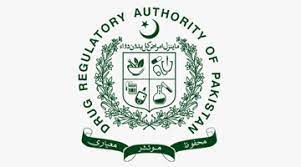Pakistan Pharma Industry SWOT – Part 1 – Asrar Qureshi’s Blog Post #592
Pakistan Pharma Industry SWOT – Part 1 – Asrar Qureshi’s Blog Post #592
Dear Colleagues! This is Asrar Qureshi’s Blog Post #592 for Pharma Veterans. Pharma Veterans welcome sharing of knowledge and wisdom by Veterans for the benefit of Community at large. Pharma Veterans Blog is published by Asrar Qureshi on WordPress, the top blog site. Please email to asrar@asrarqureshi.com for publishing your contributions here.
Opening Note
February 2022 shall mark my completing 47 years of working in Pharma Industry. Allah be praised. I am still working. The first half of my working career was spent in Multinational companies, and the latter half in the Local Pharma, making me well-versed with both innovators and generics markets. I also had the opportunity to work in business as well as operations.
My journey of near half century is also the journey of Pharma Industry in Pakistan. Great changes have occurred in this time and a lot could be written about it. In my blogs, which were started about four and a half years ago, I have covered several topics related to Pakistan Pharma Industry. This multi-part series shall do and review the SWOT – Strengths, Weaknesses, Opportunities, Threats – of the industry as a whole.
S.W.O.T
The acronym stands for Strengths, Weaknesses, Opportunities and Threats. It is an analytical model to understand the object under SWOT in above dimensions. This knowledge may then be applied to formulate strategies for business, operations, and change.
Corporate SWOT would focus on the corporate and indicate what the corporate may or may not be able to do. Product SWOT is done for an individual product.
Generally, Strengths and Weaknesses are internal, while Opportunities and Threats are external.
No one is definitively credited for developing SWOT model. Albert Humphrey led a research project at Stanford University in the 1960 and 1970s and it is said that he developed this model. Other authors attribute it to Igor Ansoff, or two Harvard Professors, George Albert Smith Jr., and C. Ronald Christiensen in 1950s. Whatever the origin, the tool has been popular for many decades and is used in routine.
It may not be straightforward to do SWOT of the entire Pharma Industry in Pakistan, but it is an effort worth doing, as it will help to understand the working and behavior of Pakistan Pharma Industry. It is of interest for insiders and outsiders both.
Understanding Stakeholders and Their Bargaining Powers
Before we proceed further, it is relevant to understand the stakeholders and their bargaining powers. Six categories of specific stakeholders may be identified – Regulators, Suppliers, Manufacturers, Marketers, Prescribers (customers), and Patients (consumers). Government role in healthcare shall be discussed under Regulators. All stakeholders have certain powers which impact the policy making and business.
Stakeholder 1 – Regulators
Pharma Industry is a highly regulated industry worldwide; all segments are regulated and reported.
Regulatory structure in Pakistan always had central and provincial arms, controlling different domains by federal government and provincial governments respectively. After the 18th Amendment, most central powers were determined to be devolved to provinces. However, both parties were ill-prepared to do it and some compromises were made.
For a long time, Ministry of Health regulated Pharma business in Pakistan with its own infrastructure which was stretched to cover all aspects of healthcare. It became too much of a burden and various divisions sprang up as per need. DCO – Drug Control Organization was housed in MoH and was specifically tasked with regulation of Pharma Industry.
In November 2012, Drug Regulatory Authority Pakistan was formed. It is an autonomous regulatory body with the responsibility to regulate matters related to licensing, drug registration, drug pricing, manufacturing, importing, and quality control. DRAP currently falls under the Ministry of National Health Services, Regulations and Coordination.
DRAP has enormous power and influence on the Pharma business in Pakistan. No drug can be manufactured or imported into Pakistan without first getting the license and product registration with DRAP. Prices are also fixed by DRAP, but it is selective. For human pharmaceutical products, strict price regulation is in place, while there is no price control for health/OTC/nutritional products. Similarly, veterinary medicines prices are decontrolled. Why this discrimination should be there? There is no definite answer.
DRAP has been beset with serious problems since its inception. Almost all the previous DCO staff was automatically assigned to DRAP. DRAP also announced its new infrastructure which included addition of several positions to reinforce its working. These positions were contractual and offered higher salaries without any long-term benefit. The old guard did not like this disparity. The newly formed DRAP had to hire a Chief Executive Officer – CEO as per criteria established for this position. No one within DRAP appeared to qualify and DRAP was run on adhoc basis for over two years, after which Dr. Muhammad Aslam was appointed in 2015 as the first, full-time CEO, on contract for three years, extendable by another year. His appointment was vigorously challenged on various grounds, but he kept working.
The conflicts seriously hampered DRAP working and in turn the Pharma Industry suffered. There were inordinate delays in licensing and registration processes. Dr. Aslam left after three years of turbulent, conflicted tenure. Obviously, not much could be achieved during that period.
To be Continued…...
Disclaimer. Most pictures in these blogs are taken from Google Images which does not show anyone’s copyright claim. However, if any such claim is presented, we shall remove the image with suitable regrets.
(PDF) History of swot analysis (researchgate.net)





Comments
Post a Comment